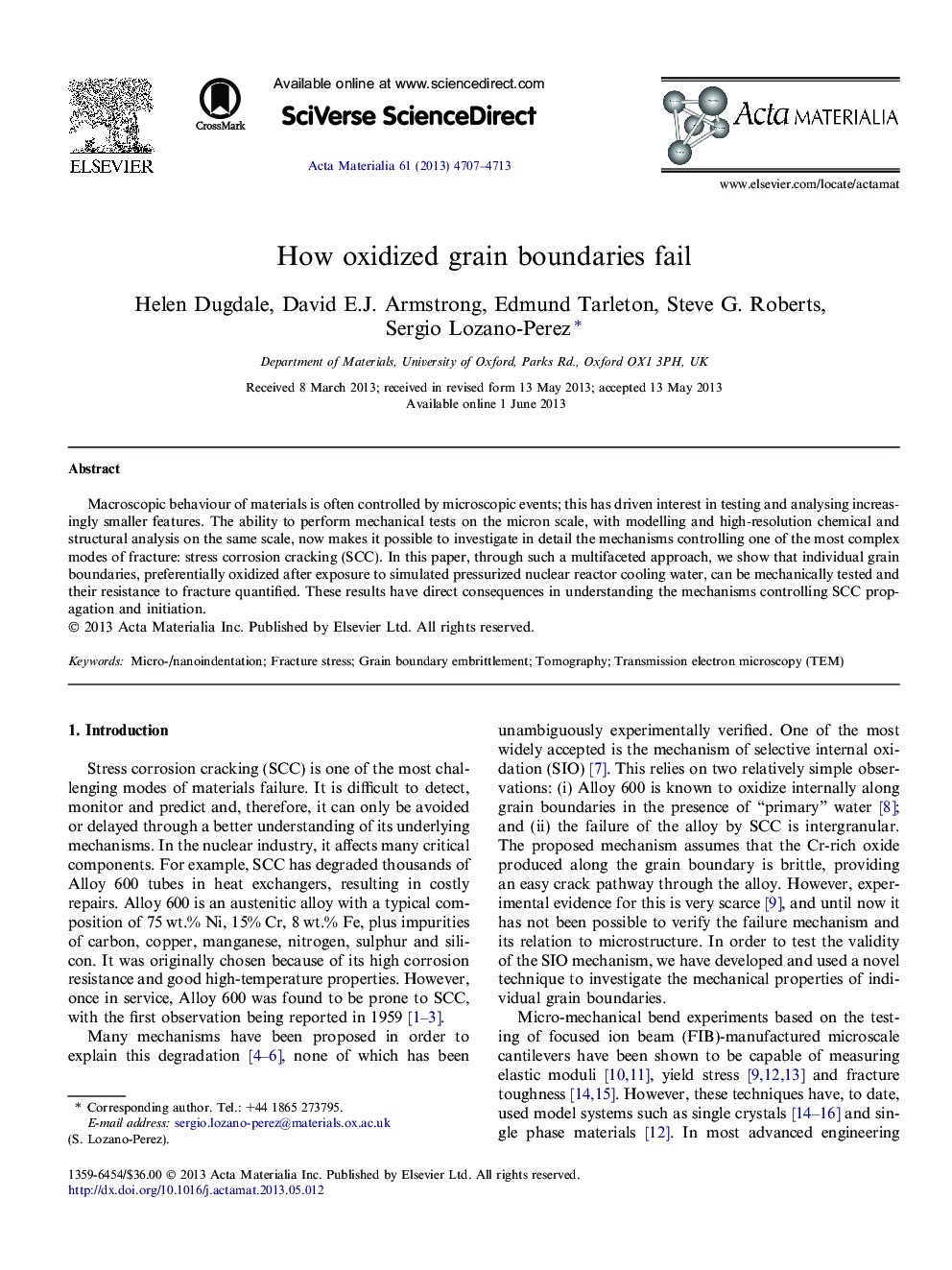| Article ID | Journal | Published Year | Pages | File Type |
|---|---|---|---|---|
| 1446247 | Acta Materialia | 2013 | 7 Pages |
Macroscopic behaviour of materials is often controlled by microscopic events; this has driven interest in testing and analysing increasingly smaller features. The ability to perform mechanical tests on the micron scale, with modelling and high-resolution chemical and structural analysis on the same scale, now makes it possible to investigate in detail the mechanisms controlling one of the most complex modes of fracture: stress corrosion cracking (SCC). In this paper, through such a multifaceted approach, we show that individual grain boundaries, preferentially oxidized after exposure to simulated pressurized nuclear reactor cooling water, can be mechanically tested and their resistance to fracture quantified. These results have direct consequences in understanding the mechanisms controlling SCC propagation and initiation.
